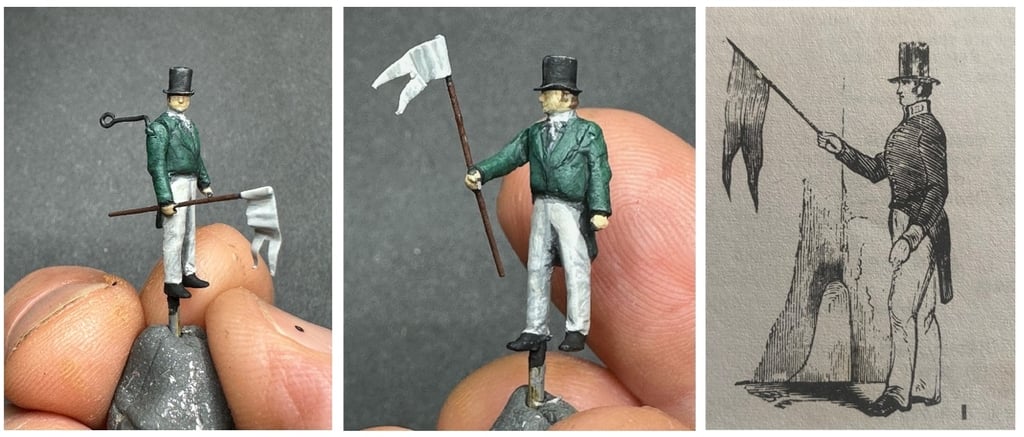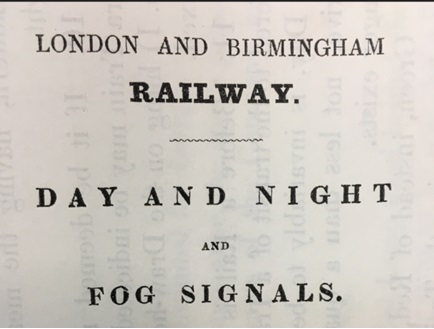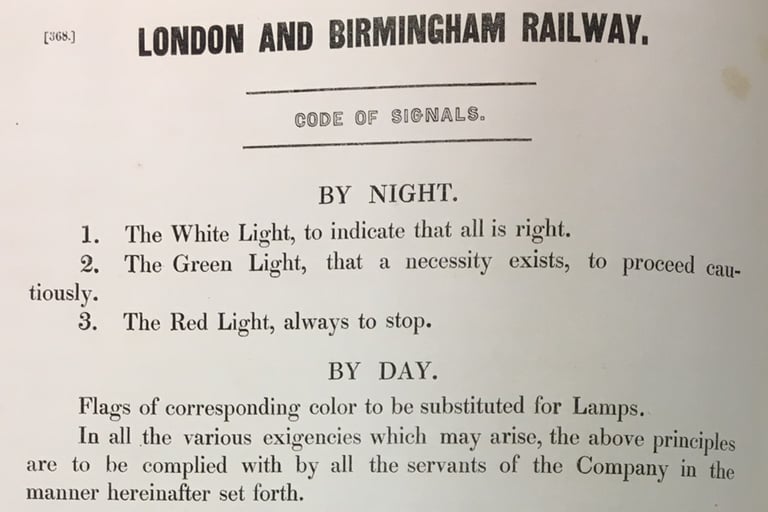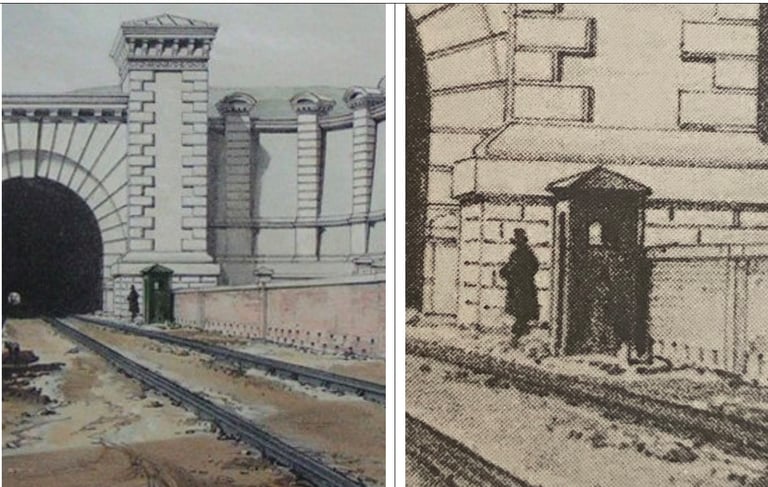Signalling & Policemen
At the time of the opening of the London & Birmingham railway there was no signalling system as we understand it today. Signalling was effected by a series of Policemen who were stationed along the line at intervals who controlled the trains with flags.
According to Peter Lecount:


Lecount, Peter, 1794-1852: The History of the Railway Connecting London and Birmingham: Containing its Progress from the Commencement; To Which Are Added a Popular Description of the Locomotive Engine, and a Sketch of the Geological Features of the Line (London: Simkin, Marshall and Co.; et al., ca. 1838)


As you’ll see in Chris’ blog, his Policeman is well dressed and holding a swallow tail flag. In 1838 the Police were stations along the line ‘a mile distant from one another and meet halfway’. [1]
Note the colour of the flag is while for all clear. Green was caution and red for stop. See below.
For some time the company had been considering running trains at night. One of the ideas was that it would be better to conduct some track maintenance tasks in the day and that it would be safer as the line would be less busy. Early thoughts were discussed with the Liverpool Directors in 1837 [2] and by 1838the company had had Joseph Wright build a considerable number of enclosed ‘Night Second’ carriages for this traffic (see rollingstock).
The first night train ran on the 19th of October 1838 and created some considerable alarm when it arrived at two hours late but everyone arrived ‘perfectly safely’. [3] Talks were ongoing at the time with the Post Office who also required night trains for mail. Mail trains had been running from the opening of the line, initially with Mail coaches being piggybacked, then with railway mail coach carriages once they had been built and by January of 1838 the Post Office were ready to start sending mail by night.
To facilitate the night running the Policemen needed lamps to show their signals. Their flags were not going to be visible in the dark.
[1] 1st of December 1838, widely reported in a number of newspapers but for example Leamington Spa Courier, and Birmingham Journal p2
[2] TNA Rail 384/62 10th December 1837, Non Resident Directors, Newton meetings, 1837 Sept.-1838 Mar.
[3] The Sun, repeated in Lancaster Gazette - Saturday 20 October 1838




Leaflet describing rules for Day & Night and Fog Signals
More on Policemen
What needs to be remembered in 1839, is that ‘signalling’ was just one of a number of functions performed by a railway policemen. Later with mechanical signals and lever frames etc a signal man became a specialised position. Another definition that changes was that of a signal box – originally just a hut to give the Policeman some respite in hard weather.


The best known illustration, I believe, of a London & Birmingham railway policeman’s hut. He appears to be wearing a full coat or great coat, as opposed the summer coat or ‘body’ coat. (J.C. Bourne, Primrose Hill Tunnel, 1838).
Over time railway police would become more associated with catching fare dodgers, on occasions criminals, and another reported concern those travelling in the wrong class. They were also called upon to manage crowds when the railway was patronised by Royalty or other notable persons.


London & Birmingham railway Police handcuffs – courtesy of GW Railwayana
One concern of the public in 1839 was that the police were occasionally heavy handed. One example that caught the attention and judgement of the press was in January 1839 when a passenger Mr Rawlinson was ‘consigned to a Station house and locked up for the night’ for not having a ticket and refusing to pay (for another). According to the testimony of another at his trial they had also been detained and were required to pay their fare over again. It is interesting to note that according to the article that it was the case that in railway acts this was legitimate but that Stage coach proprietors did not have the same powers to threaten suspected fare dodgers. [1]
[1] Railway Travelling - Harsh proceeding - Worcester Journal - Thursday 03 January 1839, see also London & Birmingham Railway, Kendal Mercury - Saturday 05 January 1839
